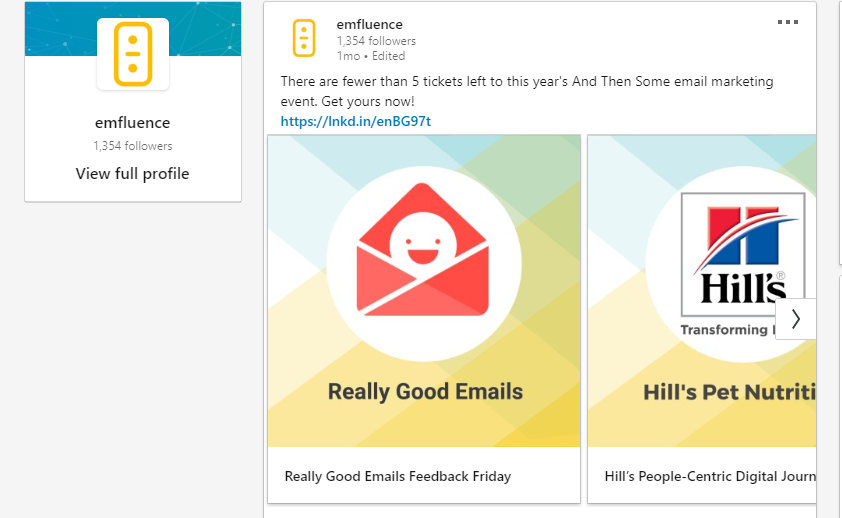If you’re basing your marketing successes on the number of likes your social posts receive, it’s long past time to rethink how you’re measuring success on social media.
In a recent update, a spokesperson from Facebook confirmed that the company is considering removing “Like” counts from posts on the social media platform. And Facebook isn’t the first—Instagram has been experimenting with a hidden Like count in seven countries (not yet in the U.S.) and even more recently, YouTube announced plans to phase out the exact number of public-facing subscribers visitors would see on channels with more than 1,000 followers.
While this change doesn’t mean all Likes will be hidden (they are still visible for the creator of the post), hiding the total “Like” count can have broad reaching effects for digital marketers. The good news? The change could cut down on the social influence of likes (e.g., the pressure to “like” a post simply because a ton of other people have), which could foster more authentic engagement. Most importantly, the change should be the final nudge to move us away from vanity metrics and into reporting that aligns with business strategy.
Let’s look at a few ways to evaluate a successful social strategy that moves beyond the “Like” count:
Define a Reason for Your Social Posts
It’s easy to hear the advice that everyone should be on social media, but that’s simply not true. Before you spin up a new social media site, ask yourself what you hope to accomplish with it. Social media takes as much time, effort, and strategy as any other marketing channel, which means you should first define:
- Your target (B2B? B2C? Generational? Industry specific? Skillset?)
- Your content strategy (Visual? Blog? Whitepaper? Video?)
- Your goal (Lead gen? Brand awareness? Sales? Thought leadership?)
- Your resources—someone will have to create ongoing content. Do you have a person (or persons) capable of doing that?
- Your competitor strategies—how does what you want to do align with what they are already doing?
Define Your Audience
It’s a best practice for marketers to know their target audience (or audiences)—although you might call them your personas or Jim, Sally, and Andrew. Whatever the case may be, you need to know who you want to target and why you want to target them.
We could go in-depth into how to create a target for social media, but that’s already been done better than I could do it in Erik Dahlstrom’s post on Audience Targeting Guide for Google Ads, Facebook, CRM, & More.
Pick Your Poison
Once you have a target and a goal, you can evaluate which social media platforms best align with your audience and desires. If you’re a B2B company, for example, you’re probably thinking about LinkedIn already. If images of your product or service are key motivators for your audience, then you’ll want to target Instagram or Facebook. Got a lot of news to share? Twitter is your friend. But don’t get stuck on one platform—think through how the breadth of your content could play on different channels. And remember to consider the more audience-specific channels (like Houzz, Pinterest, Reddit, etc.)—evaluating opportunities in smaller platforms could help you set a differentiator.
Keep in mind, however, that defining a platform (or platforms) isn’t as simple as setting up a profile and posting your blog content. Within each channel, you have a multitude of options, so now it’s time to…
Determine Your Budget
You were hoping social media would still be successful if it were free. I know—I feel that way, too. But the honest truth is that most social media platforms are favoring brands that pay for content placement. And while it is true that you can get your brand a little lift with audience engagement, that tactic alone won’t garner you the total reach you’re hoping for (unless you’re really lucky and your content goes viral).
Setting your budget for paid social is no different than any other campaign—for brand awareness, what reach do you hope to accomplish? For lead gen, what’s the maximum cost per lead you can accommodate, how many leads would you like, and what’s your expected conversion rate?
Need help with social media marketing? See what services we offer here.
Plan Your Tactics
Now that you’ve picked your goals, your audience, and your medium, you can select your tactics. Each social media platform has a variety of ways to engage with the audience using the platform. In LinkedIn, for example, you could select an InMail campaign, a carousel ad, text ad, spotlight ad, video or single image. If you were interested in targeting specific people who matched your targeted audience (which you can also define within the platform), you might choose to use an InMail campaign, whereas if you were interested in generating awareness for an event, you might choose to use a carousel ad, like we recently did for our And Then Some Conference:

To use a B2C example, Facebook offers a range of ad formats, from canvas ads to Facebook Watch, and more traditional carousel or video ads. In this channel, you might create content that retargets ads to people who abandoned your online shopping cart, like so:

Just want to grow your brand awareness? Posting images and links is fine, but take note that social media platforms are strongly pushing brands toward paid ads for best engagement. Now that you’ve spent the cash, let’s…
Calculate Your ROI (Not Your Like Count)
Let’s get back to those goals. Do you want to sell product? Great—correlating how much direct product you sold is your measure of success (but don’t forget to figure in how much you spent to sell that product). Were you hoping to gain awareness? You might consider measuring reach or engagement—both of which can offer insight beyond the Like. Did you want to generate leads? Well, you know how to count, so focus instead on the quality of lead you drove in—how many appointments did you create? How many sales—and over what period of time should you expect those sales to come in the door?
In short, stripping Likes isn’t the end of the world for marketers. In fact, we should have been looking at bigger picture metrics all along. Consider this your opportunity to get back to marketing basics!



